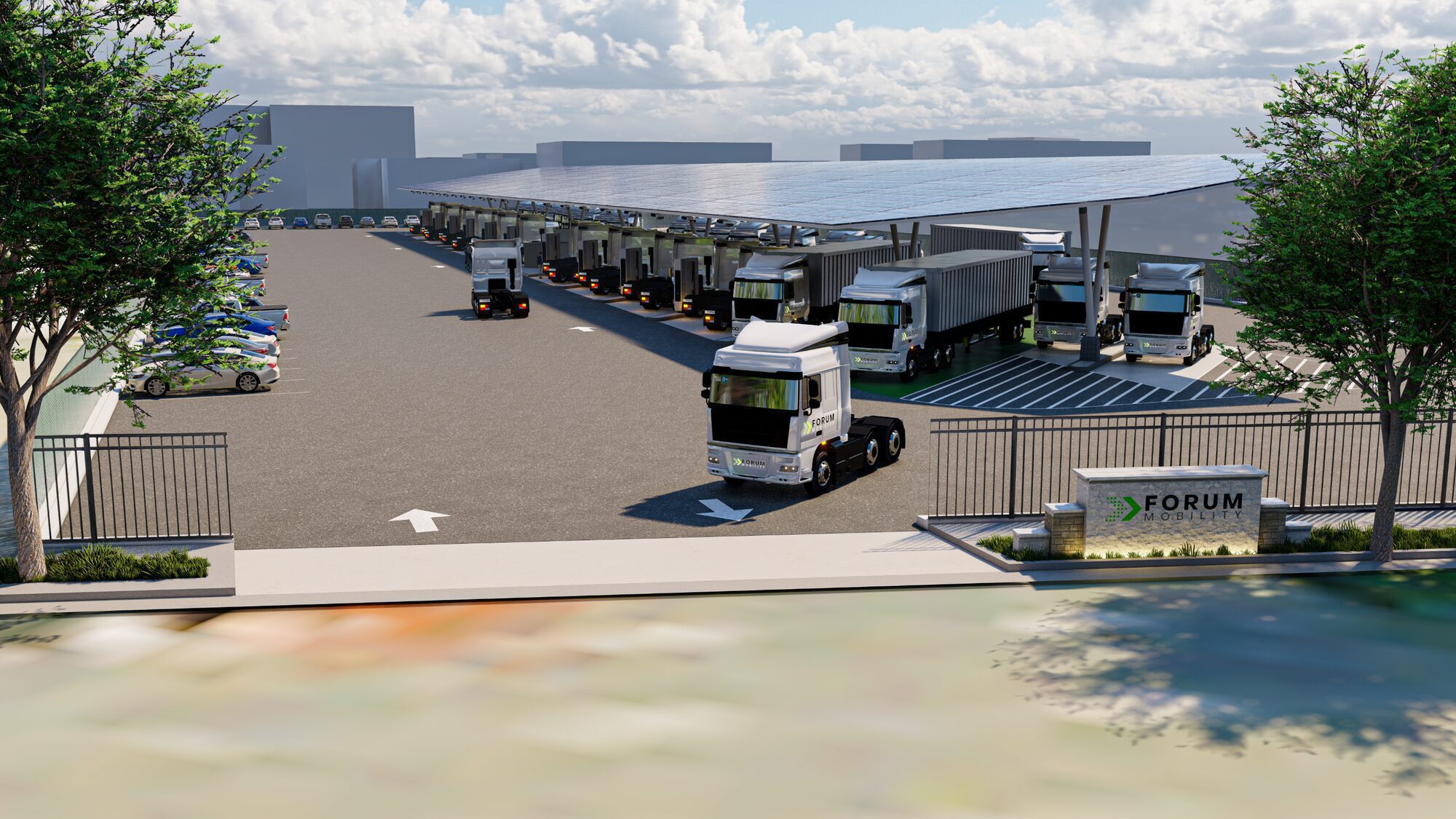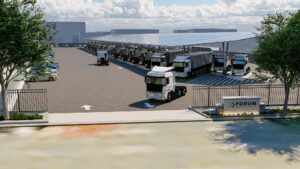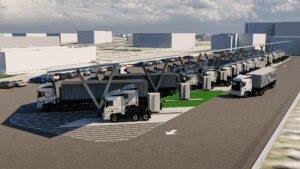

Image courtesy Forum Mobility
California’s transportation sector accounts for about 50 percent of the state’s greenhouse gas emissions, nearly 80 percent of nitrogen oxide pollution, and 90 percent of diesel particulate matter pollution, according to the California Energy Commission. In the United States, trucks represent 4% of all vehicles, but generate 25% of carbon dioxide (CO2), states a press release from Forum Mobility. Some of this pollution comes from drayage trucks, which engage in short-haul transportation of freight from ports. Near-port communities suffer from poor air quality according to the Environmental Protection Agency and diesel-run drayage trucks are a culprit. Forum Mobility supplies an alternative for diesel drayage by providing electric drayage through Fleets-as-a-service (FaaS) at depots around California’s busiest ports. Forum Mobility delivers trucks and charging together or access to electric charging depots for a fixed monthly price.
“There is a big need for large third-party depots, and drayage was the most worthy cause to attack in California,” according to Matt LeDucq, Forum Mobility CEO. There are currently over 33,000 drayage trucks registered in California but less than 50 are battery electric. “Port cities deserve cleaner air,” said Matt. The goal of offering FaaS is to assist drayage operators in compliance with government mandates, such as the Advanced Clean Fleets rule, improve the health of port communities, and create a solution that is economical for fleets.

Image courtesy Forum Mobility
Forum Mobility’s charging depots for electric drayage are conveniently located near California’s busiest drayage routes, from Oakland to Stockton in Northern California and from Long Beach to San Bernardino in Southern California.

Maps courtesy Forum Mobility
Northern California ports with Forum Mobility depots include:
Southern California ports with Forum mobility depots include:
“There is nothing in this business model that isn’t replicable in other verticals,” said Matt LeDucq. “Garbage trucks need this, ferries need this. We can replicate this model in different verticals and in different states and different countries.” There is billions of dollars of infrastructure that needs to be built. Trucks in California need over 2,000 megawatts of charging infrastructure. Drayage needs more than 2.2 gigawatts of charging infrastructure.
Electrification is coming. Beginning January 1, 2035, all drayage trucks must be equipped with and operate a zero-emission powertrain, according to the California Air Resources Board (CARB). Moreover, the draft regulation of CARB’s Advanced Clean Fleets rule states that “beginning January 1, 2024, all drayage trucks registering for the first time in The California Air Resources Board (CARB) Online System must be equipped with and operate a zero-emission powertrain as a zero-emission vehicle.
Learn more about Advanced Clean Fleet compliant drayage at: www.forummobility.com